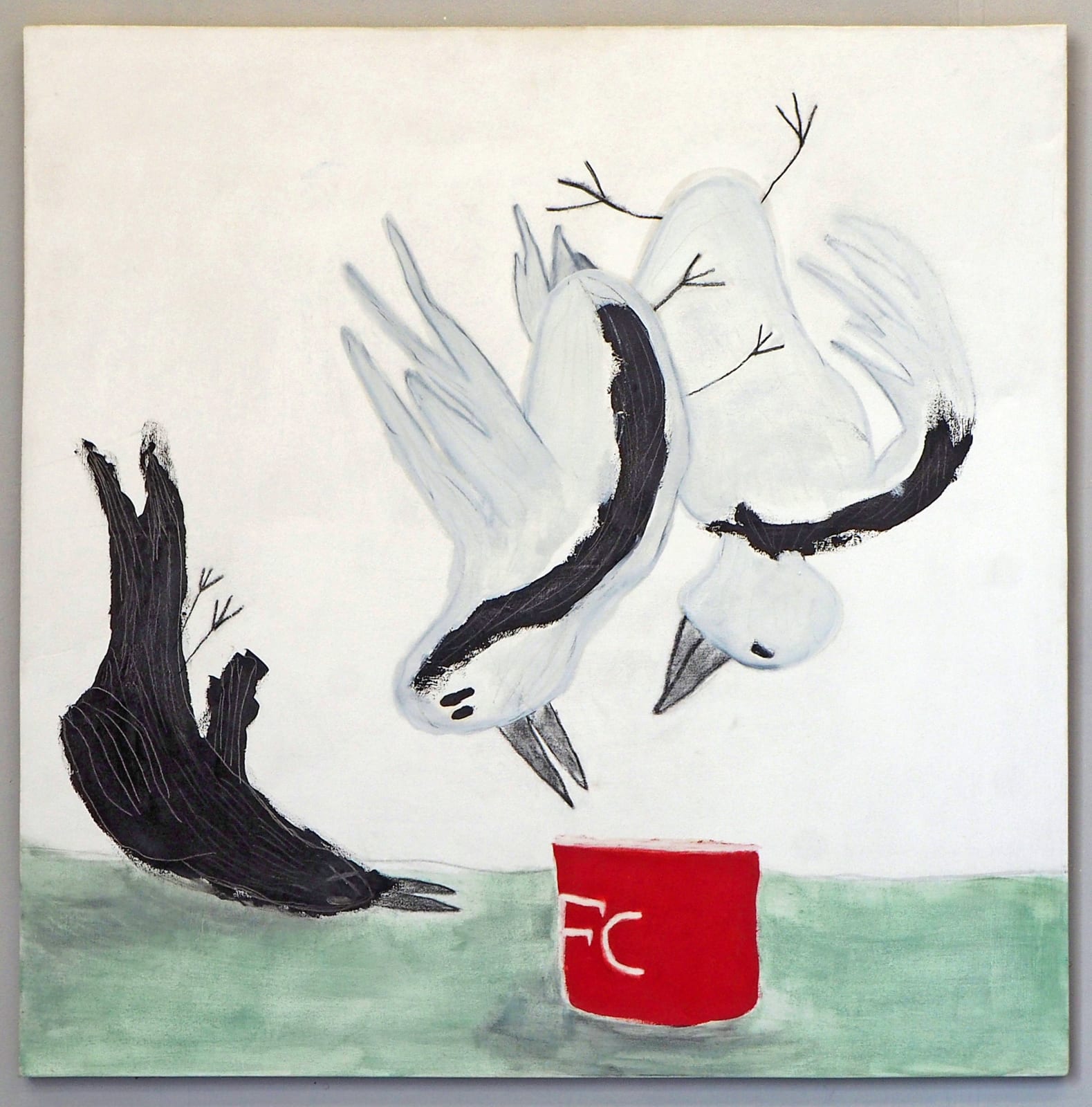Johan Ibraham Adam Swedish, b. 1989
At the core of a mythology lies a fragment of reality. Over time, the reality fades away, and the mythology continues to live on—a process examined more closely in The Evolution of Birds (2019). This work explores the inevitable decay of the object of mythology through a four-part painting series. We are introduced to an elegant dinosaur, enchanted by its beautiful song and stunning plumage, like a prehistoric bird of paradise. Millions of years later, in the 1600s, the clumsy dodo roams the forests. Described by Dutch colonizers—the first to observe the dodo—as fat, awkward, and stupid, it was extinct just a few decades later. The extinction of the dodo marked the first time humanity's role in species extinction was recognized.
Our image of the dodo is almost a caricature of a species, which in the second part of the work is contrasted with today’s bird industry. It’s worth noting that archaeological finds of bone remains in modern times have provided clear evidence that the dodo was a bird species highly adapted to its environment. The scene of jackdaws pecking at the remains of their fried cousins is a tragic one—these descendants of the magical dinosaurs have been reduced to winged pests feeding off our waste in our streets. The machinery that drives this decay is depicted in the final part of the series, where money and food circulate feverishly between consumer and industry in a carousel of excess. What image have we created of birds, and of ourselves, that allows this? And how does this connect to our image of dinosaurs, the ancestors of birds?
Inne i en mytologis kärna finns ett fragment av verklighet. Med tiden tynar verkligheten bort och mytologin lever vidare, en process som studeras närmare i The Evolution of Birds (2019). Här studeras den oundvikliga nedbrytningen av objektet för mytologin genom en måleriserie i fyra delar. Vi får möta en elegant dinosaurie och lyssna till dess vackra sång och beundra den vackra fjäderdräkten, likt en förhistorisk paradisfågel. Miljontals år senare, under 1600-talet, vandrar den klumpiga dronten genom skogarna. Av nederländska kolonisatörer, som var först med att observera Dronten, beskrivs den som fet, klumpig och korkad. Bara några årtionden senare varden utrotad. Det var i samband med Drontens utrotning som människans roll i arters utdöende uppmärksammades för första gången. Vår bild av Dronten kan näst intill liknas vid en nidbild av en djurart som i verkets andra del ställs mot dagens fågel industri. Det är värt att nämna att arkeologiska fynd av benrester i modern tidhar visat tydliga bevis på att Dronten var en fågelart mycket väl anpassad till sin miljö.Kajorna som hackar i sig rester av sina friterade kusiner är en sorglig scen där dessa ättlingar till de magiska dinosaurierna har reducerats till bevingade skadedjur som lever av vårt avfall på våra gator. Maskineriet som driver denna nedbrytning gestaltas iden sista delen i serien där pengar och mat cirkulerar mellan konsument och industri ien febrig överflödes karusell. Vad har vi skapat oss för bild av fåglarna och av oss själva som tillåter detta och hur hänger det ihop med vår bild av dinosaurierna, fåglarnas förfäder?
